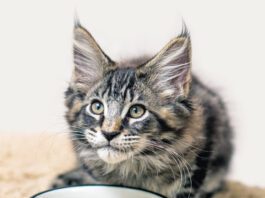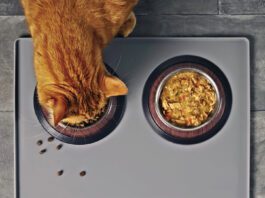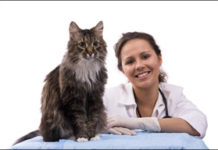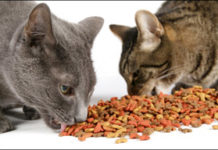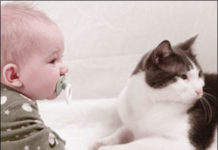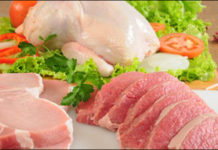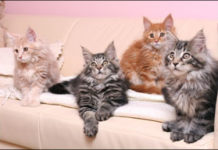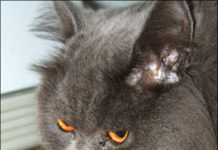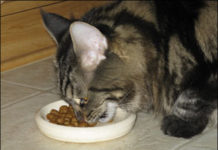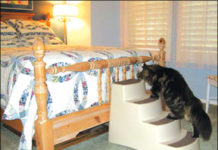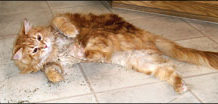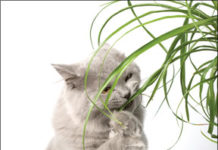Providing Good Cat Care on a Budget
With the economy struggling, its comforting to know that are plenty of ways to defray the cost of owning a cat without compromising your pets well-being. In fact, some of the most effective strategies can actually benefit your cat. According to Jodi Korich, DVM, former director of Partners in Animal Health at Cornell Universitys College of Veterinary Medicine, "One of the best ways to save money on your pets health is to pay attention to early disease detection and preventive health care." Just like oil changes and preventive maintenance result in fewer repair bills for your car, she says, regular check-ups and early intervention will save you money in the long-run.
Fluid Therapy at Home: Possible
Chronic renal failure in a cat occurs when 75 percent or more of the animals healthy kidney tissue has been destroyed and replaced by scar tissue. As a consequence, the two kidneys are unable to carry out their function of removing metabolic waste from the blood that is pumped through them. Although chronic renal failure is incurable, an affected cats life may be extended significantly by the close monitoring of its hydration status and the routine replenishment of its body fluid levels.
Ask Elizabeth: September 2010
Im very confused about feeding my cat. Feather is a healthy 14-year-old Siamese companion. Over the years Ive offered Feather a variety of products from different pet food manufacturers - everything from Tender Vittles to dry grocery store brands to fancy little pop-top cans. Whatever I scoop into her bowl, Feather will eat it.
Feeding Time: How Many Meals?
Check the pet food aisle at your local supermarket, and youll find countless varieties of food to entice your cat. Feed your cat too little or the wrong kind of food, and he wont maintain good health. Feed him too much, and hell get fat. Although the food you feed your cat should be complete and balanced, the simple answer to how often you should feed him is that it depends on your pet and your particular circumstances. Age Matters. Kittens require more food per pound of body weight to support their growth than do adult cats, and therefore should be fed more often throughout the day.
When Your Cat Wont Eat
When a cats food intake drops off, for whatever reason, the resulting decrease in protein intake can trigger feline hepatic lipidosis (FHL), which is the most common form of liver disease in cats. Inadequate protein mobilizes fat from the adipose tissue, and the fat then accumulates in the liver. "Its a vicious cycle," says Ned Kuehn, DVM, MS, a veterinary internist with Michigan Veterinary Specialists in Southfield, Michigan. "When a cat decreases her food intake, more fat accumulates, making the cat feel worse and eat even less. This makes the hepatic lipidosis get worse." The cat becomes anorexic, and severe liver failure occurs - often in as little as a couple of weeks. "Ive seen it happen within a week," says Dr. Kuehn.Some of the Causes. A wide range of conditions can trigger FHL. "About forty percent of cases are due to environmental changes in the house," explains Dr. Kuehn, who is board-certified by the American College of Veterinary Internal Medicine. Triggers include vacations, moving, a new baby, workers in the home, divorce and even teenagers leaving for college. "Cats become stressed and decrease their food intake," says Dr. Kuehn. Illnesses such as diabetes mellitus, hyperthyroidism or cancer; traumatic injury; or the presence of a foreign body in the intestinal tract may also lead to FHL.
Ask Elizabeth: 10/09
One of the main problems is ensuring that the diet is nutritionally balanced. Although it may appear that cats can live and even thrive scrounging for food on their own, a cats nutritional requirements are actually quite complex. When cats eat prey, they ingest the whole animal - and it can be hard to duplicate this "complete" diet with muscle meats and other foods obtained from a grocery store. It also takes a lot of time, expense and knowledge to prepare a well-balanced diet, and many published recipes for home cooked pet diets have been found to be nutritionally incomplete. Even when the diet is balanced, it needs to be prepared so that picky cats cant selectively eat only certain ingredients. Unbalanced Diets & Nutritional Diseases. The veterinary literature is full of documented cases linking improper diets to nutritional diseases, some of which are fatal. Well-meaning owners feeding all-meat diets have caused serious calcium deficiencies resulting in catastrophic bone fractures. While bones contain calcium, feeding cooked bones may cause intestinal blockages or perforations, leading to peritonitis (a potentially fatal infection in the abdomen). Large amounts of tuna fish can cause thiamine (vitamin B1) deficiencies, resulting in neurologic disease (tuna cat foods are supplemented with thiamine to prevent problems). Deficiencies of the amino acid, taurine, result in blindness and cardiomyopathy (a potentially fatal weakness of the heart muscle). Interestingly, while muscle meats contain large amounts of taurine, grinding the meat can reduce taurine levels enough to cause deficiencies.
Short Takes: 08/09
Baycom Diagnostics, Inc. has developed a cost effective diagnostic kit for monitoring and testing feline and canine diabetes. Currently, veterinarians use hand held glucose meters to test cats and dogs for the potential of diabetes. These meters are a critical part of human diabetes management, yet often do not work well with small animals, are expensive and must be used several times a day. The companys president says veterinarians could administer Baycoms product in a simple, easy test once every 90 days to get an accurate measurement.
Ask Elizabeth: 06/09
The dark brown color of normal cat stool largely results from substances in the bile, a liquid produced in the liver that then empties into the first part of the small intestine. Bile aids in the digestion of fats and contains a number of substances, among which are breakdown products of aged red blood cells. These breakdown products impart the yellow color that is characteristic of bile. As these yellow pigments pass in stool on the way out of the body, bacteria residing in the large intestine break them down further, so their original yellow color is changed to a dark brown.
Bothersome Eating Behaviors
One cat knocks its food bowl over and makes a mess on your floor every time it eats. Another cat is a thief. It hops onto your kitchen counter at any opportunity to snatch whatever morsel of food it might spot lying there. A third cat spends a good part of its time gnawing on the clothing it finds in your closet. These are among the more common, puzzling, and often very annoying feline eating-related behaviors that, if not appropriately addressed, can seriously compromise the relationship between a cat and its owner. Some such unusual activities, says Katherine Houpt, VMD, James Law Professor of Behavioral Medicine at Cornell University's College of Veterinary Medicine, can signal the presence of a serious physical disorder and will thus merit the attention of a veterinary nutritionist. Others are merely goofy habits that the cat has picked up and can probably be rectified by an owner. And still other undesirable eating habits may stem from deeply rooted "neurotic" problems that can only be successfully reversed with the help of an animal behaviorist - sometimes with the help of certain feline anti-anxiety medications. When is it time to seek the advice and guidance of a behaviorist? "Certainly if the animals habits are seriously endangering the cat-human bond," says Dr. Houpt. "This is an especially urgent matter if the owner is thinking about abandoning a cat to a shelter or, even worse, having it euthanized. Likewise, an owner should seek behavioral consultation if the eating behavior - consuming indigestible materials, for example - could pose a physical threat to the animal."
Is Your Cat Slowing Down?
At the age of 12, your cat seems to be slowing down a bit, and that could be perfectly normal. After all, a cat of her age - equivalent to the age of 65 or so in a human - has been living a full life and deserves to take it easy on herself. Nevertheless, its a good idea to have the animal checked out by your veterinarian. Its quite possible that her diminished activity is a consequence not of her advancing age but of a debilitating pain in one or more of her joints. Slowed-down, reclusive behavior is an indication of a joint problem in cats of any age, says Christine Bellezza, DVM, a consultant at the Cornell University's College of Veterinary Medicines Feline Health Center. "Some of the signs are very subtle," she points out. "An affected cat may seem lethargic and may increasingly seek out comforting places to nap - in a warm corner of your home, for example, or in a spot of sunshine near a window." The reclusive behavior can also be attributed to a deeply ingrained feline instinct for self-protection. A cat may want to conceal its disability for fear of alerting a potential predator to its vulnerability. Other indications that a cat is suffering pain in one or more of its joints may not be so subtle. "The cat may have trouble hopping in and out of its litter box," says Dr. Bellezza, "and it may avoid going up and down stairs." It is also possible for a cat with a severe joint problem to become constipated because it cant position itself properly to defecate. Furthermore, due to joint pain, an affected cat may be unable to groom itself thoroughly.
The Pleasures (and Perils) of Catnip
Planters of catnip, beware! This perennial is a member of the mint family, like spearmint and oregano, and it reproduces by spreading runners beneath the soil Put one catnip plant in your garden and in five years it may well have taken over. Veteran gardeners plant catnip in buried containers, or in above-ground pots that even the hardiest and most aggressive roots cant escape. Despite the voracious nature of the plant, its worth having around. Carolyn McDaniel, VMD, a consultant at the Feline Health Center at Cornell Universitys College of Veterinary Medicine, says, "Catnip is non-toxic, non-addicting, and low calorie … I think catnip can be a valuable part of an indoor cats environmental enrichment." The entire catnip plant - stem, leaf and seed - is covered with microscopic bulbs that contain nepetalactone. When these bulbs (at the end of sharp hairs called trichomes) reach maturity, they burst, releasing the oil, which then vaporizes upon exposure to air. Just like poison ivy, brushing against the leaves bruises them enough to release the oil from the trichomes, which is why you might see your cat leaning into the catnip. The oil can also be released by insects chewing on the leaves - or by a cat doing the same.
Short Takes
A study in the Journal of the American Veterinary Medical Association (Vol. 234, No. 2) found that some dietary supplements dont dissolve fast enough to be absorbed by cats and dogs. The report was titled "Composition, disintegrative properties, and labeling compliance of commercially available taurine and carnitine dietary products" and said that two out of three (labeling and composition) were adequate. Researchers concluded: "Taurine and carnitine products evaluated in this study closely adhered to manufacturer claims and labeling guidelines. However, disintegration testing suggested high variability in some products, possibly limiting uptake and use by animals that receive them."



